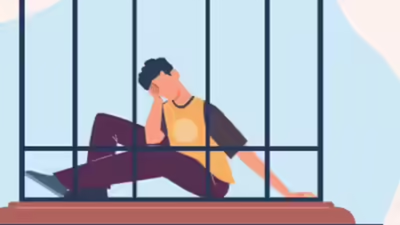
Representative image
NEW DELHI: As the Juvenile Justice (Care and Protection of Children) Act 2015 completes 10 years, Delhi with the highest juvenile crime rate of 41% in 2023, had only seven of mandated 11 Juvenile Justice Boards in its districts as per replies to RTI. According to an India Justice Report analysis, 362 JJBs across 18 states and 2 UTs (Delhi and J&K) had 55% (55,816) case backlog as of 2023. This means that only 45% of the cases were disposed of. In fact, the national capital lags the national average for disposal by three percentage points, at 42%, despite having a lower workload than seven states and one UT.The report titled ‘Juvenile Justice and Children in Conflict with the Law: A Study of Capacity at the Frontlines’ draws primarily on parliamentary responses and a year-long RTI based inquiry across states (Nov 1 , 2022 to Oct 31, 2023) and analyses the capacity of key institutions- juvenile justice boards, child care institutions, special juvenile police units and legal services.The research brings out starkly that the system is far from equipped to deliver timebound justice to a “child in conflict with law”. Like adult undertrial prisoners, children are left to bear the consequences of an inconsistent system.The ‘Factsheet’ on the capital shows that Delhi’s JJBs had disposed of only 1,030 of 2,461 cases, according to data for Nov 1, 2022 and Oct 31 2023. In comparison, Madhya Pradesh, which at 32,273 cases, had the highest workload, had a pendency of 49%. According to the analysis “this was lower than Delhi’s 58% pendency for the same period.”Highlighting that four of Delhi’s 11 districts did not have a JJB, the report states that only one-third of all 2,278 reported crimes by juveniles in Delhi were registered in the six districts with JJBs (north-west (2), east, north-east, Shahdara and south-west). “The absence of a full complement of facilities in a district means that children and their families have to travel longer distances to access jurisdictional JJBs. Most of the children belong to socio-economically marginalised families,” the analysis highlights.It also comes through that the Legal cum Probation Officer (LCPO)–responsible to conduct field inquiries, regular on-site, monitoring and coordination across large geographies and court jurisdictions-in Delhi had the highest workload among the nine states that responded to the question under RTI. Each district is supposed to have one LCPO. But in Delhi only three were reported in 11 districts which means that they handled 820 cases each.The report shows that one of the positives, meanwhile, is that each JJB (seven in Delhi) has a legal aid clinic attached to it, as required by law.It is also highlighted that in 2022, the Delhi Commission for Protection of Child Rights (DCPCR) set up a panel-led by a former Supreme Court judge with three advocates-to examine the effectiveness of legal services for children in conflict with the law, including those in CCIs across Delhi. Framed as a “structural, systemic inquiry,” it aimed to address persistent barriers. Inspections found delays in filing bail applications and many children did not know why they were in homes or who their lawyers were. The official report remains unpublished.
- Tags
- India


